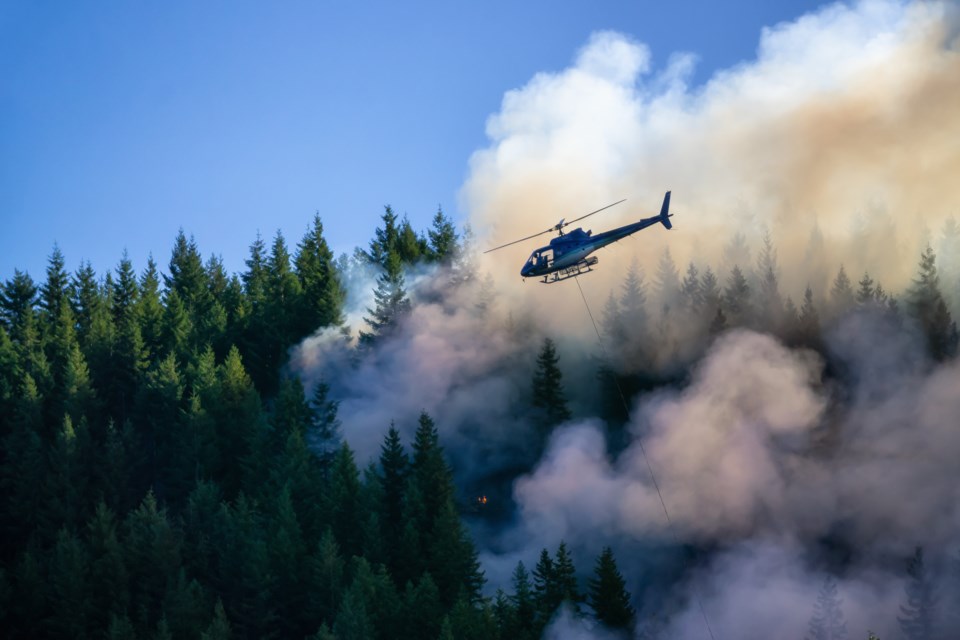Air quality in Canada has improved over the past several decades, and . But that progress is threatened by smoke from wildfires, which are becoming .
Canada’s 2023 wildfire season is , with more than 5,800 reported fires and over 15 million hectares burned to date.
Globally, . One of the best indicators of health risk from air pollution is the concentration of very small particles called PM2.5 (which stands for particulate matter smaller than 2.5 micrometres).
PM2.5 particles can deposit deep in the lungs and long-term exposure can . , including those below current .
Wildfires produce enormous quantities of PM2.5 and several other hazardous pollutants. Wildfire smoke can travel long distances, .
The health impact of wildfire smoke
The pollution mixture and chemical composition of wildfire smoke is often different from the pollution emitted by other sources, and . The toxicity of wildfire smoke also and . This underscores the need to distinguish the health impacts of wildfire smoke from the impacts of other pollution sources.
Evidence linking wildfire smoke with adverse health effects has been accumulating for years and the notion that wildfire smoke is “natural,” and therefore less harmful than other types of air pollution, is not supported by the evidence.
Most studies have evaluated the relationships between daily changes in smoke levels and indicators of health such as emergency department visits, hospital admissions or deaths.
There is strong evidence that these “acute” exposures to wildfire smoke , and is also growing. Older adults, people living in low-income areas, and those with asthma, chronic obstructive pulmonary disease (COPD), heart disease and other chronic conditions .
The health effects of wildfire smoke likely extend beyond the lungs and heart. Recent studies indicate that exposure during pregnancy may increase the risks of and . Smoke may also and .
More studies are needed, but these effects could have important implications for health during vulnerable stages of life.
. As more Canadians are exposed to smoke, and as the duration of the forest fire season increases, it will be critical to understand the long-term health impacts of repeated smoke exposure, especially among the most at-risk populations.
Strategies to protect health
Unlike of air pollution, emissions of wildfire smoke cannot be readily controlled at the source. But there are strategies that individuals and communities can use to reduce exposure and health risks.
Before fires begin, . During smoke events, because buildings reduce exposure to outdoor-generated pollution when windows and doors are closed.
Correctly sized portable HEPA filter air cleaners can . And well-fitting when outdoors or in transit. The and can help Canadians decide when these strategies are needed.
These strategies also have limitations. For example, the recommendation to stay indoors assumes that individuals have stable and safe housing. It is also complicated by heat, that may .
Portable air filters are prohibitively expensive for some families, they do not remove the gases found in wildfire smoke, and they will be less effective for those who spend time in other locations, such as outdoor workers. High quality respirators may be unavailable in some communities, may cause discomfort and .
Government and public health agencies can help to offset some of these limitations and ensure more equal protection from smoke by providing and .
Multiple overlapping strategies are needed to mitigate the health impacts of Canada’s worsening wildfires.
Ryan Allen has used portable air cleaners purchased at a discounted rate from Woongjin-Coway in his research.
Stephanie Cleland does not work for, consult, own shares in or receive funding from any company or organisation that would benefit from this article, and has disclosed no relevant affiliations beyond their academic appointment.




